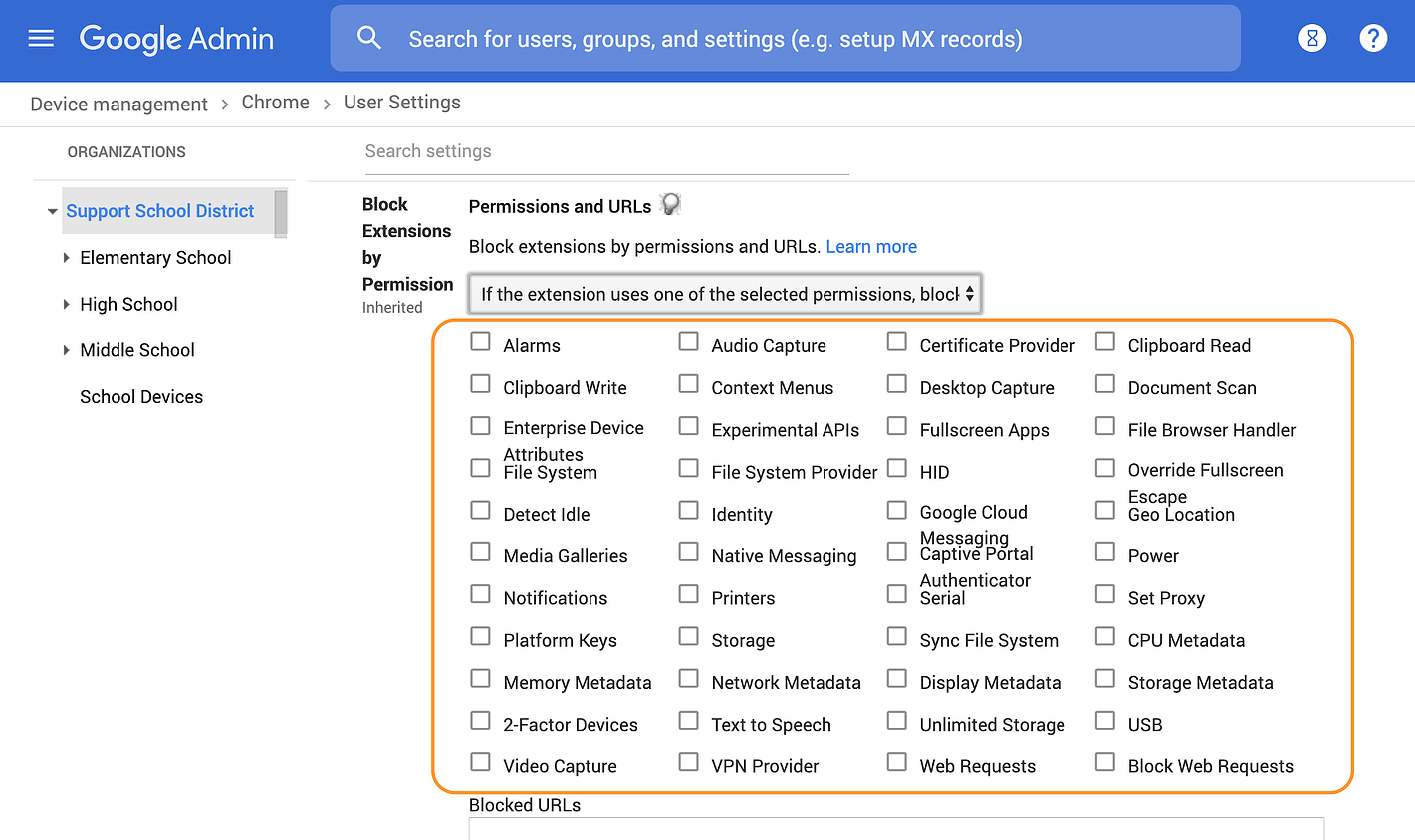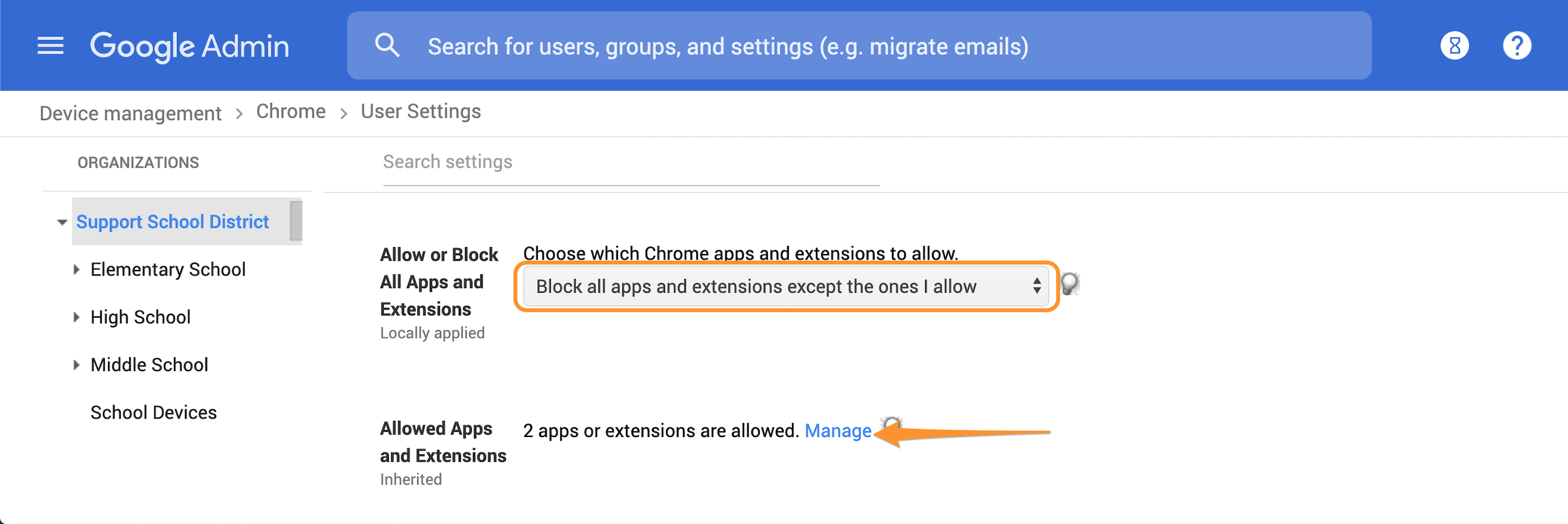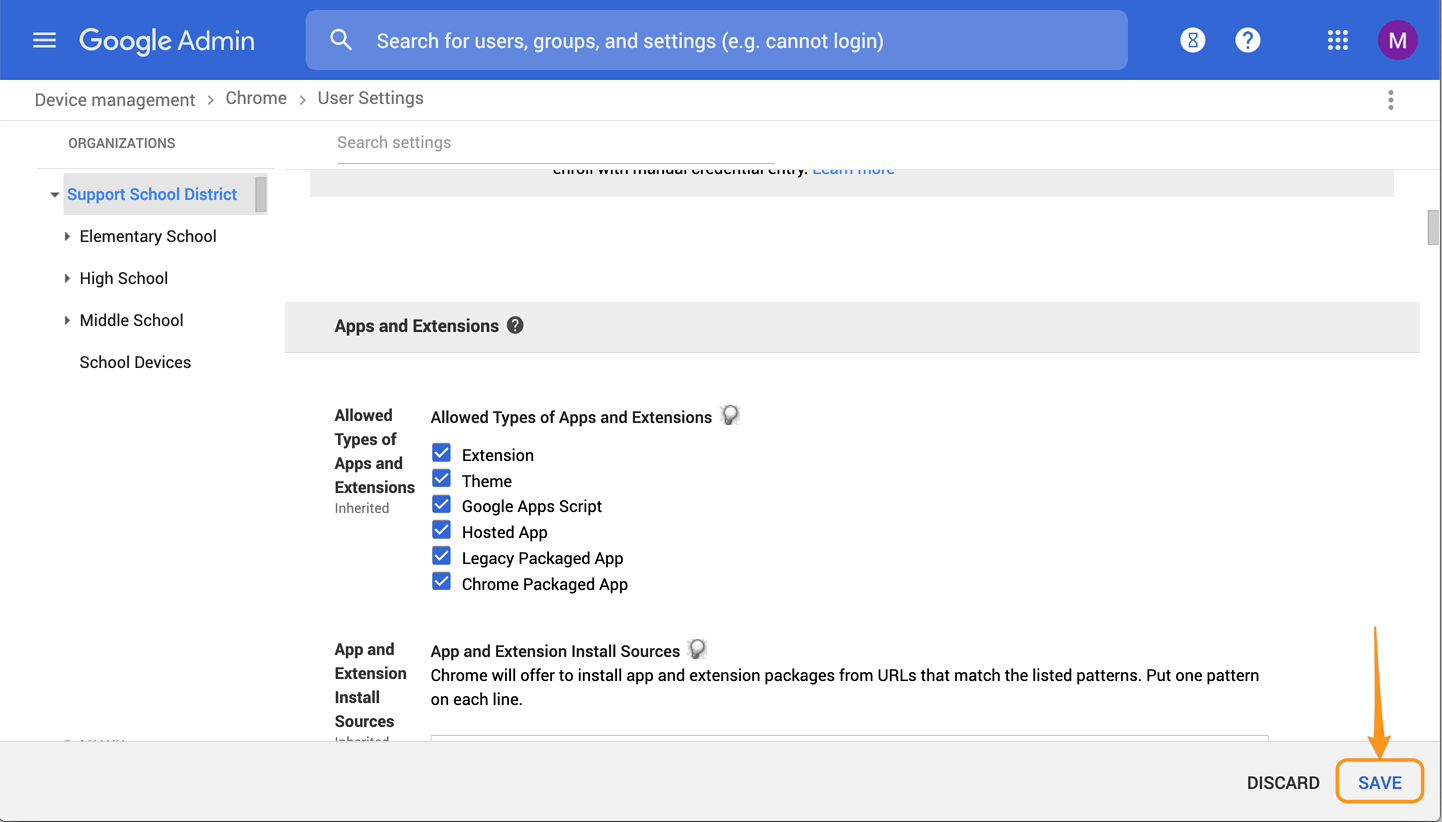How to Set Up Google Admin Console: Best Practices

In a world where pencils and paper are being replaced by Chromebooks and Google, it has become nearly impossible to manage your school and your classrooms without the Google Admin console (GAC). The management tool to bring together all school devices in one place and handle the backend technical landscape of a student’s world—the Google Admin console is a must have tool for any K–12 network administrator
Optimize User & Browser Settings
First, we’re going to show you the optimal settings for the Google Admin console. Although there are many different ways to configure settings, those described below will help ensure that both your students and their devices are functioning at their highest ability and kept as safe as possible.
Before You Get Started
Navigate to User Settings --> Configure Google Admin Console:
1. First, go to admin.google.com, and log in using your administrator-level credentials.
2. Next, click on Device Management.
3. From the Device Management screen, click on Chrome Management.
4. Now, click on User & Browser Settings.
Congratulations!
You’re now inside the User Settings, where the first group of settings will be configured.
Let’s Get to It
1. Set up Apps and Extensions.
Next up! Apps and Extensions. This is important because not only do many products require extensions in order to function, but your students will also need to use certain apps throughout their day. Ensure that extensions and apps themselves are set up to run in the Organizational Unit (OU) that you are currently focusing on.
Second, it is important to block all apps and extensions, except those that are essential to Learning and the curriculum...because kids are crafty. There are many ways they can get around filters or other products that you have, by installing proxies or VPNs disguised as innocent apps or extensions. It is very difficult to keep up with all of the different apps and extensions, and it's much easier and safer to create an allowed list.
You can find the option for allowing extensions in the Apps and Extensions section, and ensure that the extension box is checked under Allowed Types of Apps and Extensions.

You can find the option for allowing all extensions in the Apps and Extensions section, and ensure that the option to “Block all apps and extensions except the ones I allow” is enabled.

2. Disable Incognito Mode.
If a user opens an Incognito window in Chrome, no extensions will be loaded—this is not good! By disallowing Incognito Mode, you can ensure that the apps and extensions you would like to be active will remain so, in any and all Chrome windows students are using, and that your students stay safer.
You can find the option to “Disallow Incognito Mode” in the Security section.

3. Disable Developer Tools.
It’s possible for certain functions of developer tools to interfere with apps and extensions that you may have running. It’s also possible for students to use developer tools to remove apps and extensions or bypass filtering and safety precautions you have in place. To be safe, it’s best to disable all developer tools on student Chromebook OUs.
You can find the option for “Never allow use of built-in developer tools” in the User Experience section.

4. Enable Screenshots.
Many apps and extensions use the screenshot function in the Google Admin Console to power screens and for various other features. If this option is not enabled, then the apps and extensions will not be able to see the screens of their students, nor be able to take or see screenshots.
You can find the option to Enable screenshot in the Content section.

5. Block Extensions by Permission.
GoGuardian extensions require permissions. In order to ensure that the extensions work on your devices, check to make sure these are not blocked:
- alarms
- detect idle
- notifications
- memory metadata
- identity
- storage
- web requests
- geolocation
- CPU metadata
- block web requests
- native messaging
You can find the option to block extensions by permission under device management > chrome management > user & browser settings, under “apps & extensions”.

6. Save your settings.
Changes made in the Google Admin Console don’t get saved automatically—you will need to click the main Save button in the lower right corner of the active window after making any changes.
You can find the Save button in the lower right corner of the Google Admin Console.

Nice Work!
And that’s it! After clicking the Save button, all of the settings you chose to change will be saved! It’s a great idea to go through each and every setting and make yourself aware of where each is located, and read through each setting itself. The settings and locations often change, so familiarizing yourself with each setting and what they do will really help you put them to good use in the future.
To learn more about configuring Device Settings and other helpful GAC tips, check out our Help Center article.
A Special Note About GoGuardian
If you’re a GoGuardian customer, you can further enhance the Google Admin Console safety settings with the following GoGuardian Admin console settings:
1. Force SafeSearch and Safe Translator.
GoGuardian Admin includes a set of options that will force SafeSearch for all web searches on Google, Bing, and Yahoo for the selected OU. You can also restrict all translations made by Google to be translated into safe language appropriate for students.
Enabling both of these is optional. We recommend enabling both to help protect students from harsh language, ensure that their image searches are appropriate for school, and to prevent them from stumbling onto websites that are inappropriate and/or distracting to Learning.
2. Block Direct IP Access.
Additionally, we recommend enabling Block Direct IP Access, which will prevent students from accessing websites with a direct IP (for example, entering https://74.125.224.72/.) Block Direct IP
Access can also help prevent students from accessing inappropriate content.
You can find things like Force SafeSearch, Force Safe Translator, and Block Direct IP Access in the
Filtering Settings page of GoGuardian Admin 2.0. To access the Filtering Settings page, click on the
top icon in the upper left corner of the GoGuardian navigation page, and select Filtering.
Jump to Section
Bring the power of GoGuardian to your school or district today.


